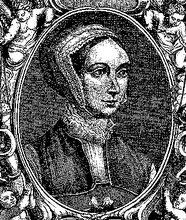In the Priest's House - above - at West Grinstead in Sussex there is a hide. The Carylls of West Grinstead Park, which no longer exists, established a priest in a cottage on their estate, probably in the early 1600s. In its attic was a hay loft which was converted into a chapel and a hide incorporated into the fabric of the house. This is the only example of a hide, that I know of, which was built into the priest's own permanent dwelling place. In the photo above, the two windows in the uppermost part of the timber framed side of the house are the windows of the chapel. You can read more about the Carylls and the house here.
The chapel itself is really lovely and I, for one, would be very happy to celebrate daily Mass here. On one's way up to the second floor chapel you pass a small window on the stair well between the first and second floor. You can see this window in the photo below; it is a modern portal which allows visitors to look into the hide itself.
The entrance to the hide would have been in the attic or roof space itself, such that the person would have lowered himself down into the hide. The photo below was taken from within the hide looking directly upwards. (The electric light is obviously modern.) I think that the original entrance to the hide no longer exists; the house has been substantially remodelled over the centuries.
There is also a small doorway in the chapel itself which allows one to peer into the space which surrounds the central chimney stack. This is not a hide but enables one to imagine how hides were contrived in those dangerous years. The actual hide is in fact behind that part of the brick wall which is set back, and directly in front of the camera.
Next to the Priest's House is the lovely mid-nineteenth century church of Our Lady of Consolation - a place of pilgrimage. You should visit this shrine, but ring first to arrange to see the priest hide and secret chapel.




































